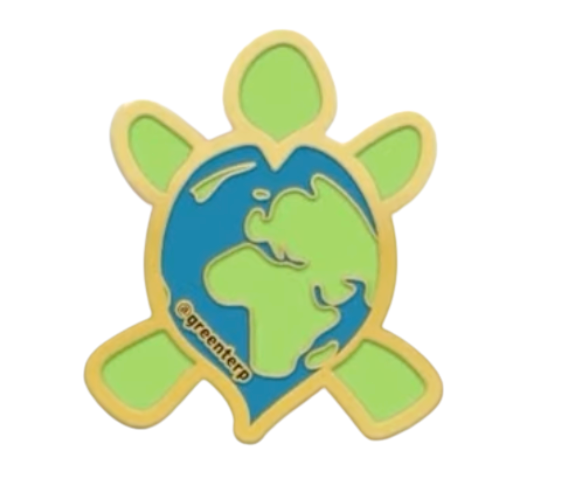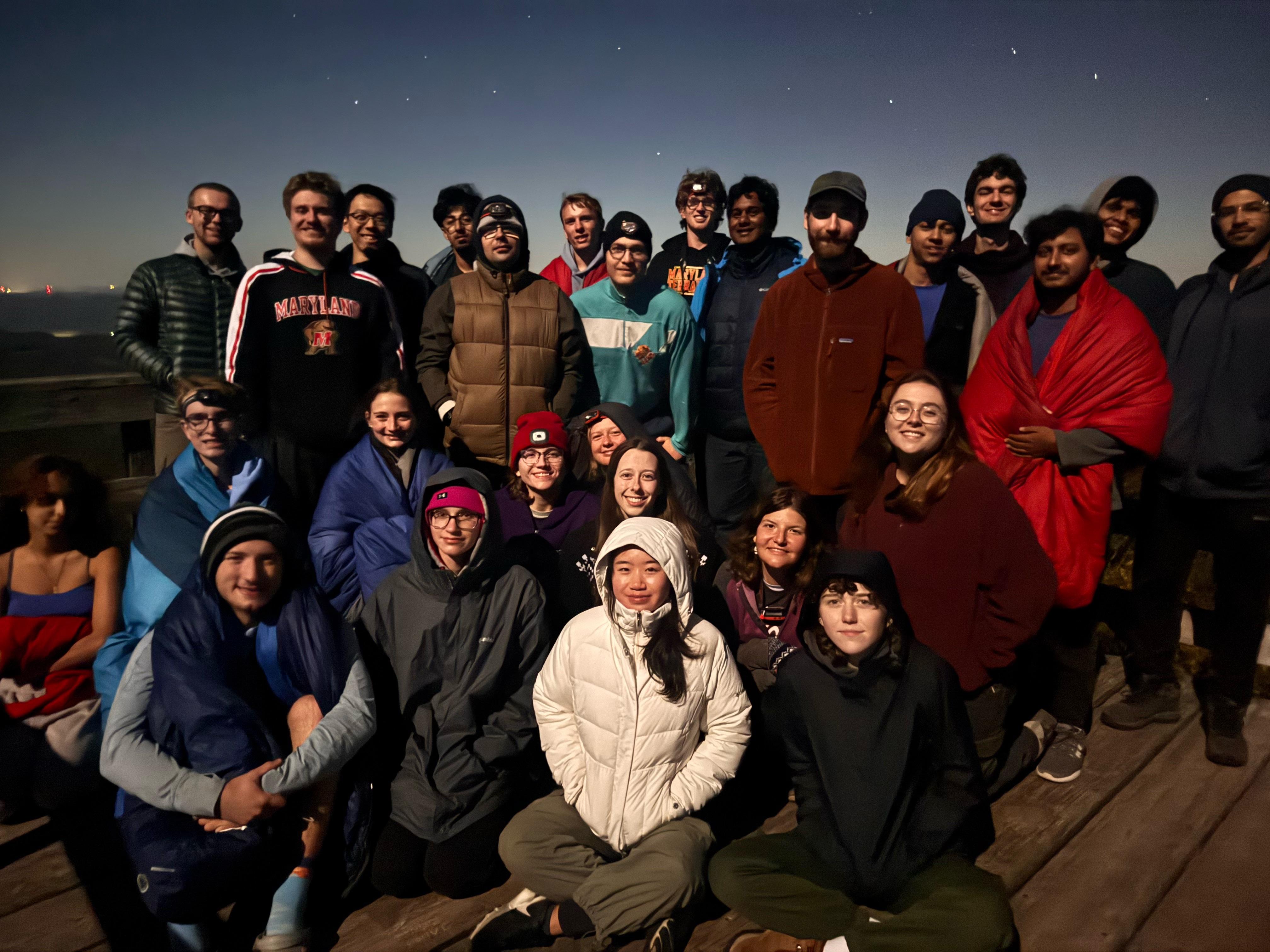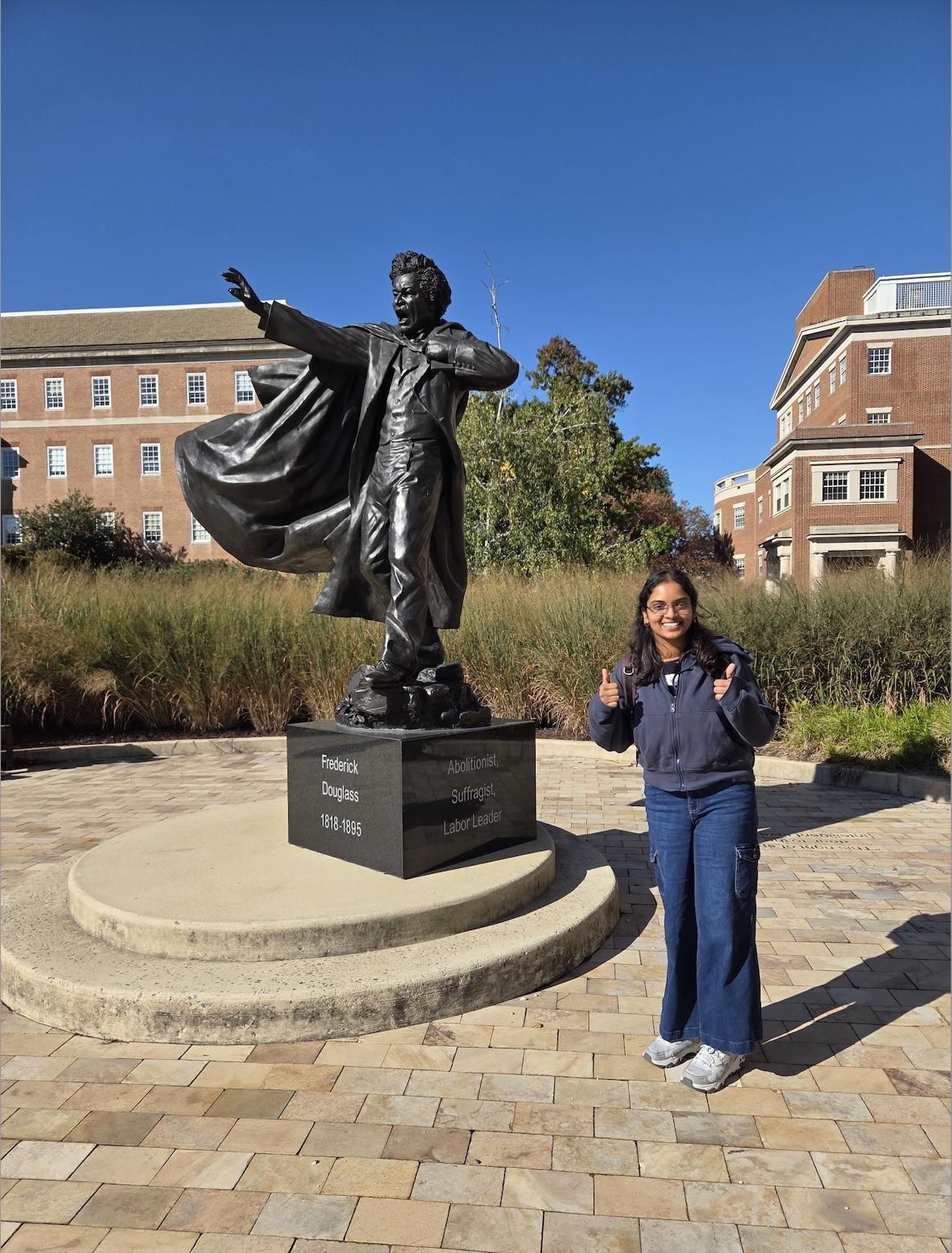By Vivian Maneval '27

What does it really mean to be a Green Terp? At UMD, it’s more than recycling or reusing where possible; it’s also about exploration and creating community. From the first pin on your backpack to the green cord at graduation, the Green Terp Bucket List (also referred to as the Bucket List) invites students to discover places, passions, and people to connect them with sustainability on campus.
A Look Into the History
In 2012, the Green Terp Program took shape within Oakland Hall as a series of events to spark conversations about sustainable living in residence halls. By 2014, it had evolved into the Green Terp Pledge, a checklist that encouraged students to take simple, sustainable actions in their daily lives. Launched through a partnership between the Office of Sustainability (OS) and the Department of Resident Life (Res Life), the pledge invited Terps to commit to habits like turning off their lights and using reusable items.
"When the Green Terp pledge first launched, these types of actions weren’t as widespread as they are now,” said Taylor Brinks, Sustainability Project Manager in the Office of Sustainability. “Students still needed to be reminded to use reusable water bottles and to turn off the lights when they left the room. Now, many campus buildings have motion-sensor lights and water refill stations that have helped better embed these seemingly basic measures into Terps' everyday lives."
While the pledge raised awareness, OS and Res Life suspected it could be shaped into something more meaningful. “After various evaluation methods, we found that we met targets on paper, but realized that students were not understanding their actions the way we had intended. We were limiting our opportunity to build student skills and knowledge by hosting a checklist that did not fully represent student experience and involvement with sustainability,” recounted Lisa Alexander, Res Life Program Manager of Sustainability Programs & Initiatives. Rather than a list of action items, building a sense of shared identity around being a Green Terp would help students develop intrinsic motivation to live sustainably and engage with other related activities on campus.
After an ENSP Capstone group provided input on redevelopment, the program transitioned from taking the Green Terp pledge to being a Green Terp. A Green Terp is any UMD student who embodies sustainability through learning, community engagement, and mindful choices. Together, they form a campus-wide community united by a shared desire to make an impact, regardless of their major or background.
Still, maintaining the shared Green Terp identity required purposeful experiences. Thus, the Green Terp Bucket List was born.
The Green Terp Bucket List
The Green Terp Bucket List invites undergraduate students to explore sustainability through action and discovery. Modeled after the M Book challenge, it encourages new experiences with sustainability through a series of tasks. As students complete challenges and earn rewards, they may find that they’re already engaging with sustainability without realizing it. Along the way, they may uncover a new community, hobby, or passion!
How It Works
The Bucket List consists of four themed categories: Campus Locations, Campus Events, Climate Anxiety & Wellness, and Individual Challenges. Each has five actions to complete. Students explore sustainability across campus, from attending events to visiting landmarks like the Frederick Douglass statue—a reminder of the deep ties between social justice, the economy, and the environment. Other challenges take students all over: visiting the animals at the campus farm, locating biowalls and solar panels, and utilizing resources like the campus pantry. Learn more about the challenges here.
Each completed category earns students a themed pin, and those who complete all four categories are awarded a green cord to wear at graduation, a symbol of their sustainability journey. Challenges can be completed at any pace and in any order before graduation, with pins available for pickup at Office of Sustainability events. Event details will be shared on the @SustainableUMD and @GreenTerp Instagrams.




Why Join the Challenge?
Every task is an opportunity to connect with yourself, your peers, and the world around you. A single service event may spark your next hobby, and a walk on a local trail could become your new favorite routine. Through the Bucket List, you’ll uncover numerous ways to get involved in sustainability, foster habits, build friendships, and gain a deeper understanding of your impact.
Sustainability isn’t just about personal action; it’s about collective impact. The Green Terp Bucket List helps students take those individual steps while becoming a part of something bigger: a campus community working toward a greener future.
Check out some of the photo submissions and their cooresponding challenges from the Bucket List below!





